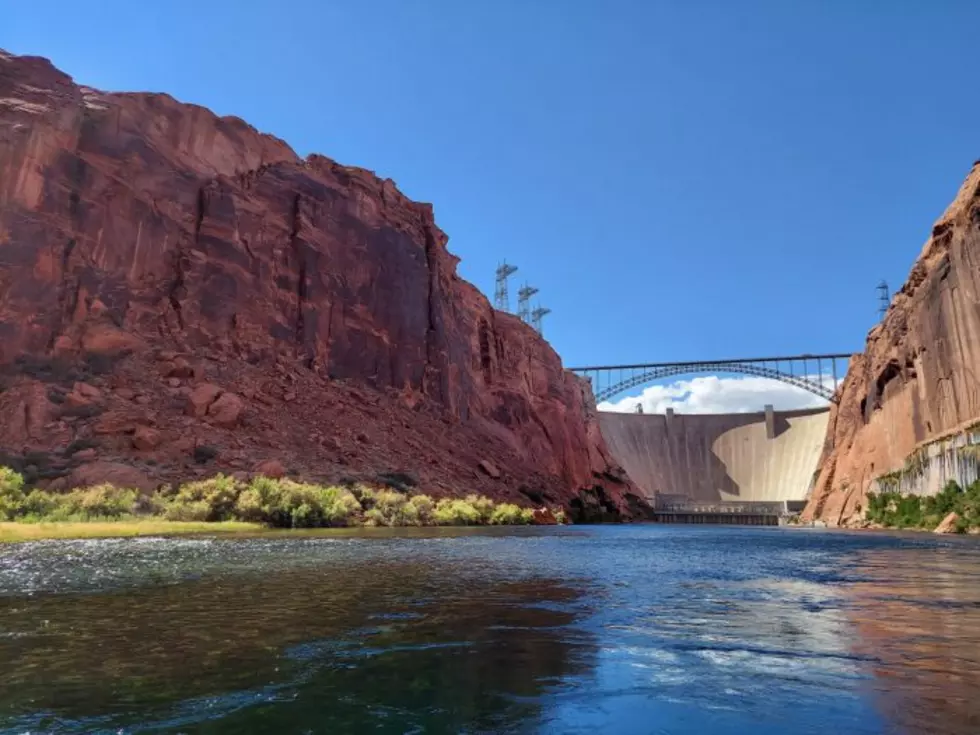
Feds to take water from Wyoming to bolster Lake Powell
(CN) — In a sign of how dire drought conditions have become in the American West, the Bureau of Reclamation will keep water in Lake Powell amid record low levels.
The Bureau of Reclamation announced it would hold water in Lake Powell — a major supplier of water to agriculture and municipalities — and add more water from the Flaming Gorge Reservoir upstream to stave off dropping water levels that could impact the electricity supply for nearly 6 million homes, mainly in Arizona.
“Today’s decision reflects the truly unprecedented challenges facing the Colorado River Basin and will provide operational certainty for the next year,” Tanya Trujillo, the bureau’s assistant secretary of water and science, said in a statement. “Everyone who relies on the Colorado River must continue to work together to reduce uses and think of additional proactive measures we can take in the months and years ahead to rebuild our reservoirs.”
The announcement came a year after water managers in the region cut water deliveries to farmers for the first time since the system was constructed in the 1960s. Lake Powell’s lake level is currently at 3,522 feet — the lowest in the history of the reservoir.
A drop of another 33 feet would impair the Bureau of Reclamation’s ability to generate hydroelectric power for customers in Arizona, Nevada and California.
The bureau has the authority to take drastic actions to ensure water supply but has never invoked its authority to withhold water and take water from upstream sources until now.
Located on the Green River, which flows through parts of Wyoming and Utah, the Flaming Gorge Reservoir currently stands at 78% of its storage capacity, much better than many of the reservoirs in the American West.
“Given the extraordinary circumstances, our release from Flaming Gorge is designed to substantively benefit the continued operation at Lake Powell while having a manageable effect on Flaming Gorge,” said Wayne Pullan, who manages the Upper Colorado Basin for the bureau.
While the effects on the Flaming Gorge are characterized as manageable, the water level is expected to drop 9 feet, which could have an impact on various recreational activities at the location throughout the summer, officials said.
But the larger impact will come to farmers downstream of the Glen Canyon Dam, who will have to make do with fewer water deliveries. This has long been a fact for farmers in California’s Central Valley, who have grown accustomed to fluctuations in water availability, but has not been a feature for those who rely on water from the Colorado River Basin.
““By working together, water users in Arizona, California and Nevada will continue to make all required shortage reductions and water savings contributions,” said Jaci Gould, the regional director for the Lower Colorado River. “Given the impacts of climate change, it’s clear that everyone has to do more to protect our reservoirs — and that means using water with maximum efficiency.”
The two actions are expected to provide 12 months for water managers to figure out alternatives for water management.
The Colorado River Basin supplies water to more than 40 million people and provides sustenance to 2.5 million acres of croplands in the American West.
Drought has persisted in the region for two decades, with water managers and scientists increasingly laying part of the blame on human-caused climate change, which they say causes significant changes in long-term weather patterns.
From 2000 to the present period, the Colorado River Basin has experienced the driest period in the more than 100-year record. At the same time, the population of the American Southwest has continued to grow at an accelerated pace.
Arizona grew 11% since 2010, according to the latest U.S. Census. Nevada grew by 15% and Utah has grown the most of any state, at 18%.
Lake Powell stands at less than 25% of its storage capacity. In California — also been beset by dry skies and scant precipitation — the largest reservoir, Shasta, stands at 40% capacity.
